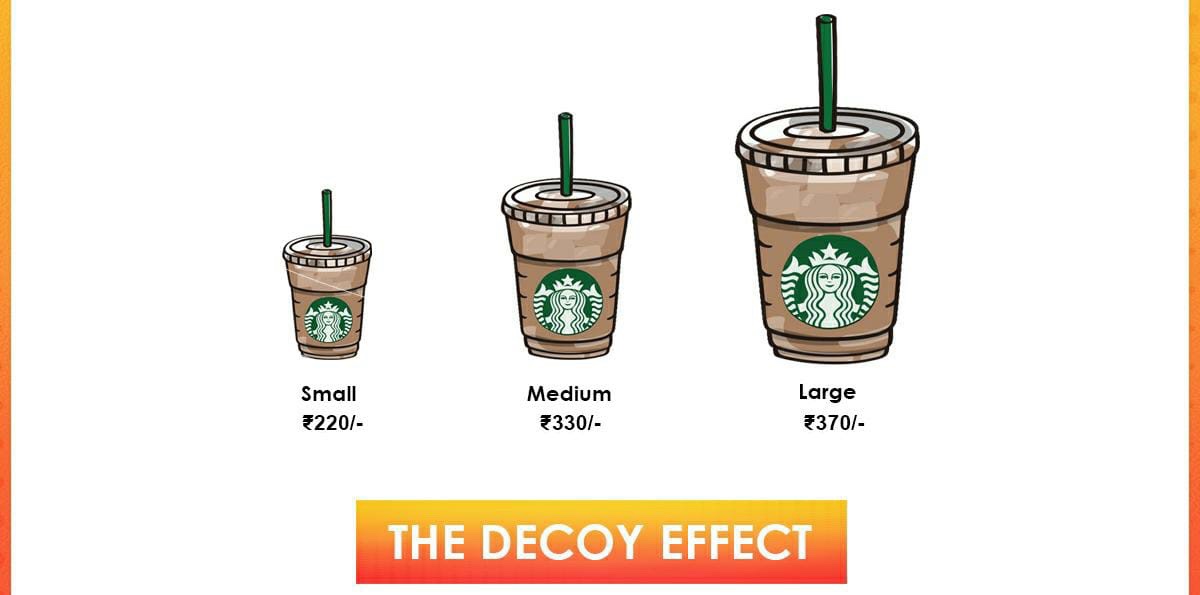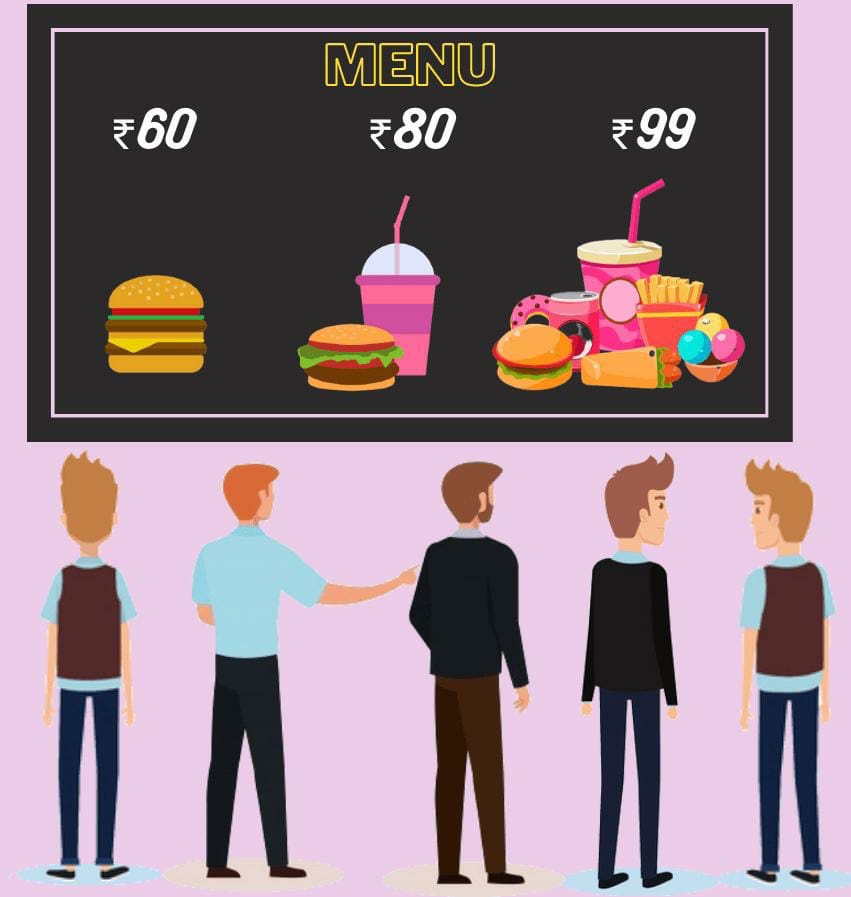A strategy that is designed to boost the sales of a higher-priced product, by creating another version of the product whose price is slightly less than the top price of the product, is known as the decoy pricing strategy. It makes the large product seem good value by comparison.
This strategy is used by many companies like Starbucks, McDonald’s, Apple, etc, to get you to spend more money on their product. It is also known as cunning strategy.
Consider coffee shops, where the decoy pricing strategy is used to make customers think twice before making a purchase. For instance, while placing an order, the cashier asks if we would like a large cup of coffee with a price of INR 100 instead of the regular one. This is a dilemma that customers have to face when it comes to making a decision. The trick makes the customers think twice before making a purchase. The strategy depends on two factors: the attraction and the compromise effect.

Let’s see another example for clear understanding;
When we go to a movie theater, we usually purchase “popcorn”. Initially, the sellers would only sell large and small sizes of this item, which were priced at around INR 200 and 600 respectively. Due to this wide range of prices, the customer would usually buy a small packet. Due to the limited number of sizes, the sales of large packets decreased. To solve this issue, the sellers introduced a medium-sized packet that was priced at around 550. This packet was the decoy. Customers would now purchase the larger size as it was only 50 more expensive than the medium-sized one.
How to implement a decoy pricing strategy
A decoy pricing strategy is a type of marketing that involves offering a three-way plan. The middle option increases the perceived value of the target item, while the second option lowers the value. The strategy can be implemented in phases. Before implementing a decoy pricing strategy, the management must know what the target item is. After the target item has been identified, two other products should be presented that is similar to the one that’s being advertised. The second product should be priced lower than the one being sold to portray lower quality.

While the second product should be priced lower than the one being advertised, the decoy item should be priced higher to attract more potential customers. The third product should be priced higher to show that it’s better than the advertised item. An intentional pricing strategy ensures that the target product is not the decoy. The target price should reflect the quality of the product and not be unreasonable. The cost of the decoy should be the same as that of the target, while the price of the target should be slightly higher. The objective is to make the target product more visible to customers.


